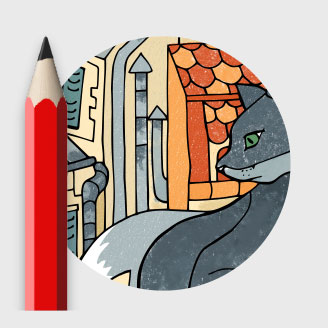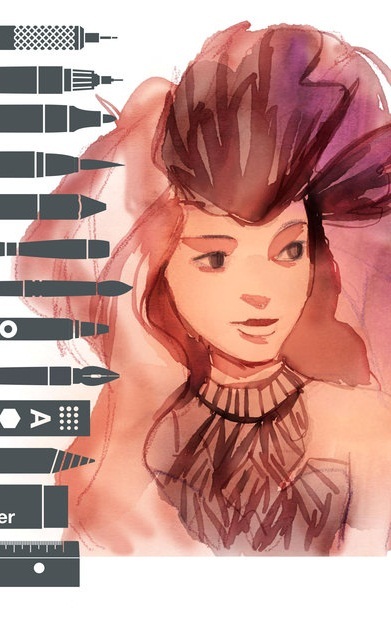

- #Tayasui sketches for windows full#
- #Tayasui sketches for windows for android#
- #Tayasui sketches for windows android#
- #Tayasui sketches for windows software#
When they resized the app, the configuration of the widget they were using to integrate the drawing view detached - causing the drawings on the screen to disappear. While testing on Chromebooks, the Tayasui Sketches team realized they had one issue to solve before launch. Troubleshooting with an experimental mindset They also implemented tapping and direction arrows for focusing elements, built in multiple options to change the background and switch up button sizes, and added rules limiting the number of on-screen items to maintain a sleek look and feel.įrom there, optimizing for ChromeOS laptops was simple: The team used an existing SDK to enable the stylus input and added keyboard shortcuts to copy and paste folder names. The Tayasui Sketches team rolled out 20 realistic drawing tools that would seamlessly respond to the touch of a finger - including watercolors that remain “wet” until users tap to dry the ink.
#Tayasui sketches for windows android#
The Tayasui Sketches team used Flutter to carry over the app’s existing logic to Android and ChromeOS smoothly while optimizing the UX for larger screens. This enabled the team to carry over the app’s existing logic smoothly while optimizing the UX for larger screens.
#Tayasui sketches for windows for android#
Lead developer Florian Paillard took the charge by using OpenGL in Flutter while scaling for Android and ChromeOS, which was the same engine Tayasui Sketches used for iOS.
#Tayasui sketches for windows software#
But they ultimately decided to run with Flutter - Google’s open-source UI software development kit (SDK) for developing cross-platform apps from the same codebase - for the much-needed flexibility. The Tayasui Sketches team considered building their Android app natively. Scaling for Android and ChromeOS with Flutter Here’s how Tayasui Sketches’ lean dev team optimized for a growing range of Android and ChromeOS devices in one go. Plus, the number of Android app users increased 50% year over year in 2021 on Chromebooks alone, illustrating people’s growing love for large-screen devices - and a can’t-miss growth opportunity for Tayasui Sketches. By building for ChromeOS and Android, they’d be able to cover multiple form factors and delight more artists than ever. The picture was crystal clear for Tayasui Sketches’ developers. This would then automatically scale across all of artists’ go-to Android devices - from mobile phones fit for on-the-go inspiration to tablets that offer creatives more room to play, along with ChromeOS’ seamless stylus support.
#Tayasui sketches for windows full#
ChromeOS runs a full Android framework, so Tayasui Sketches decided to create a Chromebook-tailored experience. The more flexible your codebase, the easier it is to scale.įast forward to 2019, when the Tayasui Sketches team decided to move beyond iOS to connect with even more artists on Android. This heavy lift proved to be an invaluable lesson: The more flexible your codebase, the easier it is to scale.

Digital artists intuitively look for apps that mimic real-life pen-to-paper sensations, so Tayasui Sketches’ developers rolled out their app to iOS tablets first, followed by mobile and laptops.īut every time they expanded to another device in the iOS ecosystem, the team essentially had to create a new UX from scratch. To make the most of its lean development team’s resources, Tayasui Sketches decided to start by building for one form factor at a time - with sights set on scaling to others after assessing performance. Eight years ago, the Tayasui team launched their drawing app - Tayasui Sketches - to empower creatives with an intuitive tool for creating digital art, ranging from scenic sketches to detailed portraits .


 0 kommentar(er)
0 kommentar(er)
